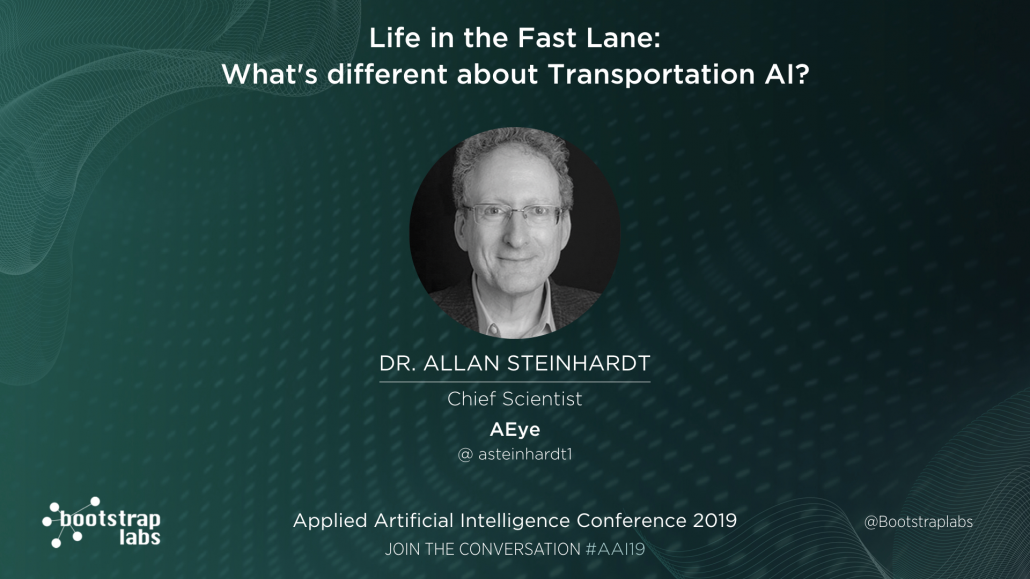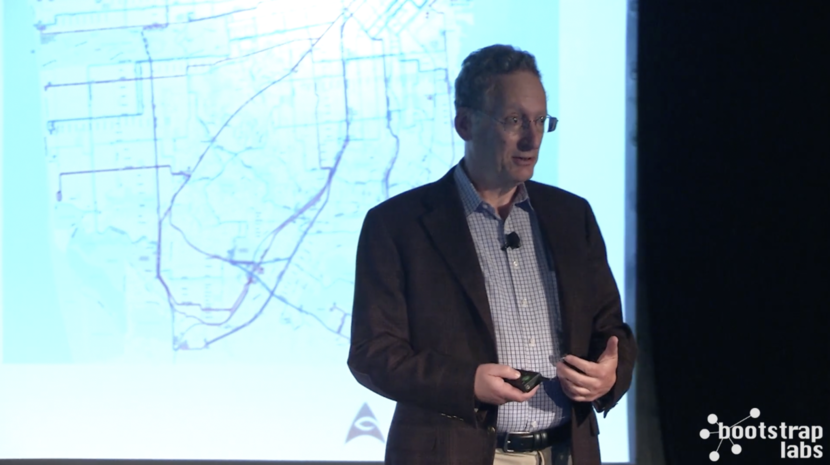Flashback: BootstrapLabs Applied AI Conference – Life In The Fast Lane: What’s Different About Transportation AI?
The BootstrapLabs Applied Artificial Intelligence Conference 2019 #AAI19 brought together the brightest and most experienced experts in the field of AI for an immersive day of learning, discussion, and connection.
On our BootstrapWorks we have released the videos from this past conference to relive the moments and spread the knowledge around the diverse topics covered by our experts on stage.
BootstrapLabs has built a community of more than 40,000 people from over 60 countries who care about applying Artificial Intelligence to solve the hardest problems of our society.
Get access to practical wisdom on Applied AI methodologies and take advantage of AI’s powerful potential, sign up here to receive the videos directly into your inbox.
AI is a critical tool for using observed data to make and predict decisions. While most industries work with curated data, transportation is a different situation: self-driving cars rely on volumes of real-time information. AEye chief scientist Dr. Allan Steinhardt discusses the role of AI in abstracting and extracting the right information from a car’s environment, including how to deal with the influx of data in vehicle autonomy and ADAS. Additionally, he explores the role of transportation AI in smart highways and how smart cities with next-generation wireless (5G) will impact transportation AI trends.
Speaker: Dr. Allan Steinhardt, Chief Scientist, AEye
Some of the key takeaways from the session are:
- If you look at the individual components of a system you learn nothing, it is important to understand the overlaying complex adaptive systems.
- The mathematics of understanding complex adaptive systems is similar to mathematics of quantum theory.
- If we think about AI for transportation in cities, we have to think like complex adaptive systems with all the different layers of meaning that intersect in very complex ways: Merging the different tribes of car makers, transportation engineers and Perception/AI engineers and their respective areas of focus is important to understand the different layers around transportation AI.
- Signals from autonomous vehicle sensors are plotted in a point cloud, but the noise in the data can be used to identify road surface features, background light that is interfering with the laser etc.
- MIT students were able to utilize RF exhaust noise from various wireless signals as a radar beacon to track humans through walls.
- Massive amounts of RF bandwidth is being used for communication in transportation AI: One of six radars on a car might use 2 Gigahertz of bandwidth meaning that one car needs more bandwidth than dozens of cell-towers which is clearly not sustainable.
- Complex adaptive systems do brokering between layers and today there are many start-ups that provide various technologies for brokering of communication networks.
- Congestion represents a lot of wasted capital assets.
- The current data mindset is the more data, the better. AEye’s mindset however is described as the latest time of value: Navigating space-time obstacles safely because it is essential to make a decision immediately since there will not be a better decision later in any traffic situation. Therefore it is essential to increase the quality of the data capture process which can be modeled to focus only on key objects like the human brain.
About Allan Steinhardt:
Dr. Allan Steinhardt is among the world’s most widely esteemed defense scientists. An IEEE fellow, he is a sought-after expert on radar, missile defense, GMTI and space surveillance. He was Chief Scientist for DARPA, co-author of a book on adaptive radar, and assistant professor in Electrical Engineering and Applied Mathematics at Cornell University, where he researched sensor arrays and optimal detection capabilities. Allan also served as chief scientist at Booz Allen at MIT Lincoln Laboratory, and director of signal processing for the defense industry with BAE/Alphatech. He holds a bachelor’s in Mathematics, and graduate degrees in Electrical and Computer Engineering from the University of Colorado, Boulder.


